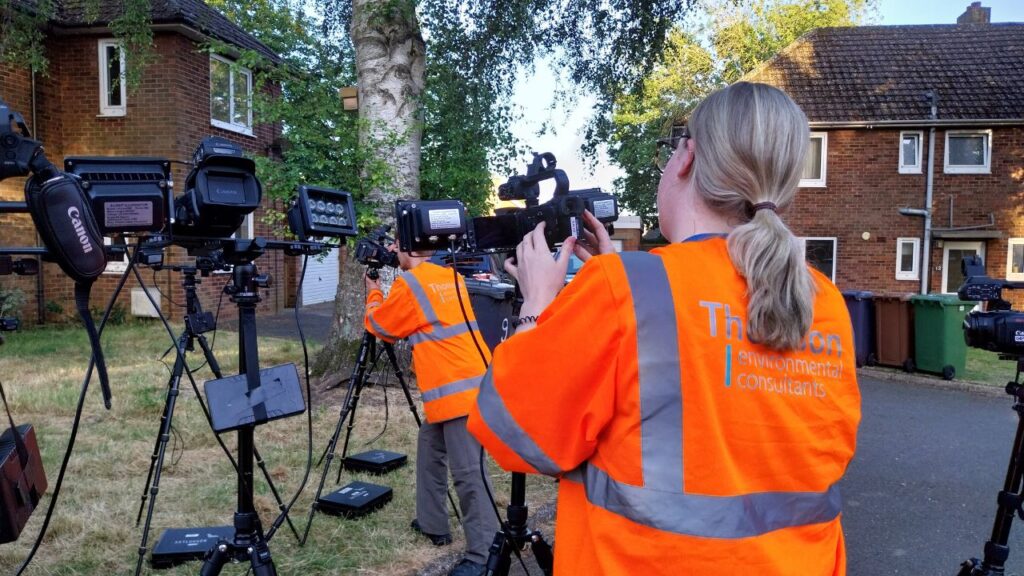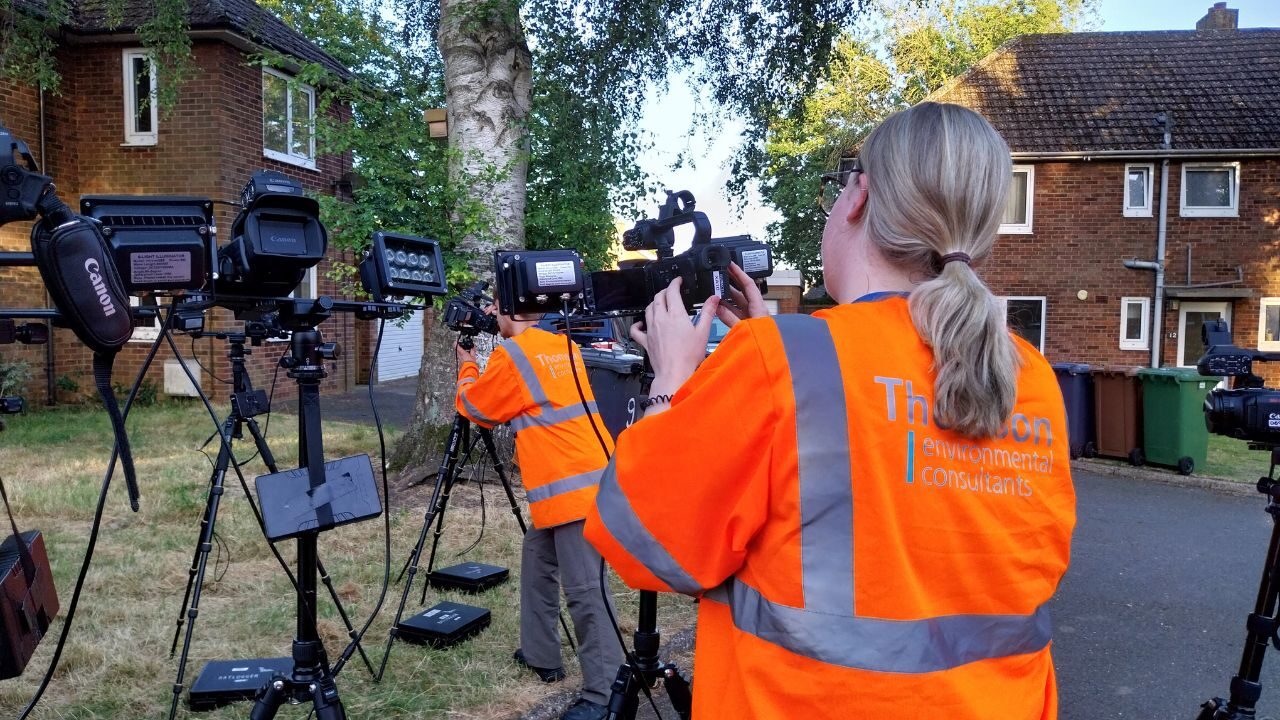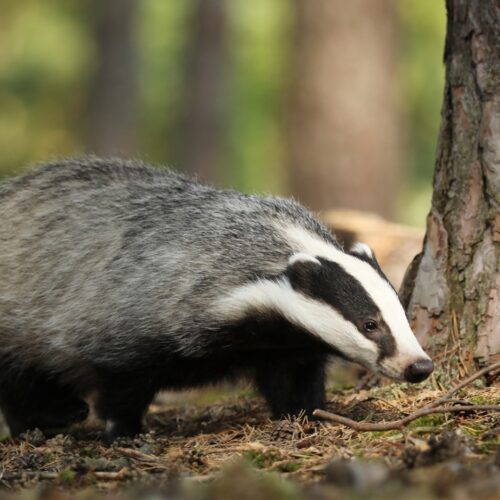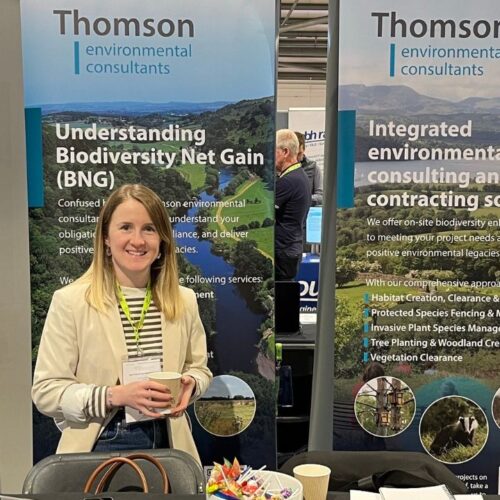Our recent wildlife study reveals that one in two (50%) people across the UK rarely or never see bats in their gardens. Despite the UK having 18 species of bat, these statistics reveal that we can do more to protect bats and their habitats.
As experts in ecology and habitat management we have put together a guide to understanding laws protecting bats and their habitats, developer’s responsibilities, and requirements for licensed bat surveys.
Whether you’re a developer, contractor, or involved in infrastructure projects like railways, this resource is tailored to help navigate the complexities of bat conservation.
Bat protection and the law
In the UK, bats and their roosts are fully protected by Habitats and Species Regulations 2017 protecting bats, their roosts and resting places from damage and destruction. Further protection from disturbing bats or obstructing their roosts is also provided through the Willife and Countryside Act 1981. As bats return to the same roosts year after year, their roosts are protected whether bats are present or not.
Under the same regulations, transporting, selling, or possessing bats is an offence, and anyone found guilty of breaking these laws could suffer a fine or even a prison sentence.
Only licensed professionals can undertake mitigation work, and some advanced bat surveys require a survey license from a statutory agency such as Natural England or Natural Resources Wales. Our professionals are licenced to carry out surveys and suggest relevant mitigation plans, and we can work with you to engage local planning authorities and licensing bodies for development that may impact bats.
When undertaking bat surveys, ecologists must follow industry-recognised best practices, such as those from the Bat Conservation Trust’s‘ Good Practice Guidelines’. These cover the need to:
- Conduct bat surveys during appropriate seasons to ensure accurate data collection and minimise disruption,
- Use standardised, validated techniques for consistent and reliable results across all surveys,
- Ensure all surveyors hold necessary licenses and follow legal requirements,
- Provide clear, comprehensive reports detailing findings and recommendations for bat conservation,
- Incorporate conservation strategies into development plans.
In addition, Natural England lays out some additional guidance for surveying, including:
- Gather background data on local bat populations and habitats before starting surveys,
- Interpret survey data in the context of bat behaviour, ecology, and local environmental factors,
- Adapt survey strategies based on site-specific conditions and emerging evidence to improve accuracy.
Following best practice guidance is imperative not only to ensure that planning authorities and licensing bodies accept survey results and mitigation recommendations but also for the responsible management of bats and their habitats on development sites. It aims to help the long-term conservation status of bats across the UK.
Bat surveys: Techniques, best practices and seasonality
As bats are protected under law, ecologists must prioritise the animal’s safety and well-being whenever undertaking bat surveys. We utilise a range of tactics and technology to follow bat survey guidelines and best practices and ensure environmental and legal compliance for our clients.
Seasonality
Where a proposed development may impact a bat roost, bat emergence surveys are often required. It is important to note that emergence surveys (at dusk) should only be undertaken from May to September, with visits in July and August needed to detect the potential presence of maternity roosts (sites where female bats birth and raise their pups).
Hibernating potential must also be considered, as bats also hibernate in built structures. Where hibernation potential is assessed, surveys will be required from November to March. These surveys involve searching for hibernating bats and using static bat detectors to monitor activity.
Developers should be aware of these timescales when planning a project, as missing the survey window may result in delaying construction until the following season’s completion of surveys. This could mean a delay of up to 12 months, so engaging an ecologist early on any project is critical to help identify potential constraints and inform the program.
Night Vision Aids (NVAs)
Use of NVAs to help detect bats has been around for some time, but became a requirement of best practice survey techniques in 2024. Using NVAs gives better detection in dark or near-dark conditions and allows survey data to be reviewed. Following the Bat Conservation Trust’s ‘Good Practice Guidelines’, our team reviews the footage recorded by NVAs as soon as possible after the survey is complete to confirm the results.

Radio tracking
In unique circumstances, such as those where rare bats are present or the habitat or development proposal is complex, we use radio tagging to track the bats’ activity and movement to better understand how we can avoid negative impacts and provide positive enhancements to the bat habitat. Such survey work requires trained and licensed professionals, and often, the consent of the licensing authority is needed to approve the survey plans.
Bat mitigation and survey case study: Highways Depot Development
We previously worked with VolkerHighways to undertake a range of bat surveys in Somerset.
After undertaking a Preliminary Ecological Appraisal, Preliminary Roost Assessments, Emergence Surveys and Hibernation Surveys, we discovered two bat roosts and worked on a bespoke mitigation plan. We designed a new bat house to replace the lost roosts, constructed within a week to ensure the client’s project stayed on track.
The development was able to go ahead as planned, no bats were injured during the works and they now have a new home. You can read the full case study here.

Benefits and outcomes of bat surveys for development projects
The presence of any bats or their roosts on a development site can cause significant financial and legal complications. Working with an experienced environmental consultancy will help developers follow the law and understand the risks.
With many moving parts in large development sites, bat surveys can be undertaken by a third party beforehand to ensure legal compliance. Developers are advised to instruct a professional to undertake a bat survey if it is reasonably likely that bats could be present, especially if they have been found in neighbouring areas.
Once a bat survey has been undertaken and findings analysed thoroughly, your environmental consultant can provide suitable mitigation strategies to ensure your project runs smoothly. This will include applying for a mitigation license with the relevant statutory agency such as Natural England or Natural Resources Wales.
If bats are present on a development project, mitigation strategies as part of the license may include:
- Development of alternative bat roosting sites, including bat boxes,
- Bat roosts integrated safely and strategically within areas of the development,
- If parts of the bat’s foraging habitat is lost, additional bat-friendly areas, such as hedgerows, wooded areas, or artificial cave-like nooks in surrounding infrastructure, could be created.
Developing bat habitats: A downloadable guide
We have created a downloadable guide to building your own bat home. This is aimed at homeowners looking to increase bat roosting habitat on their property. Key steps include:
- Gather materials: Rough-sawn, untreated wood (22x150x1200), untreated strip wood (20x20x900), tape measure, hand saw, hammer and nails or drill and screws.2. Attach the 450mm strip of wood to the backboard with screws or nails.
- Drill 5mm holes in the top corners for fixing points.
- Attach the front board to the strip wood with nails or screws.
- Secure to a wall with screws or a tree trunk with strong wire through the fixing holes.
Once installed, the bat box cannot be moved or opened without a license, so take care to install your bat home where visitors or pets in your garden are unlikely to disturb it.
How Thomson Environmental Consultants can help
At Thomson EC, our team is highly skilled in undertaking bat surveys to ensure minimal disruption to roosting bats or their habitats. We have vast experience across a range of industries, including highways, commercial and residential development, and in working with local authorities.
Get in touch today to discover how we can support your next project!











